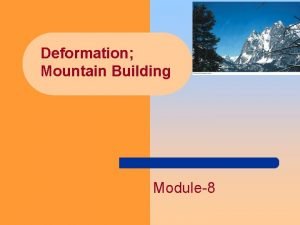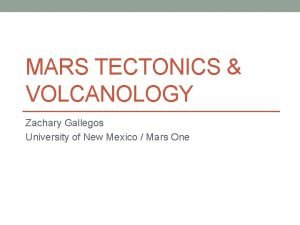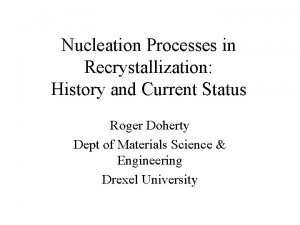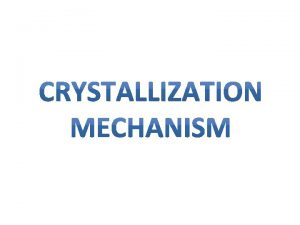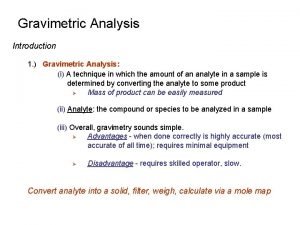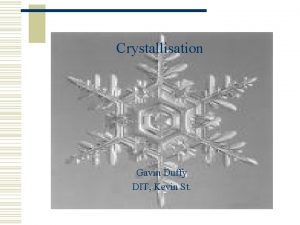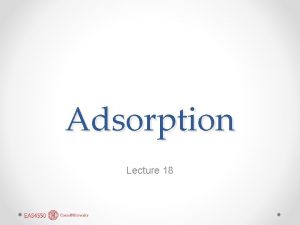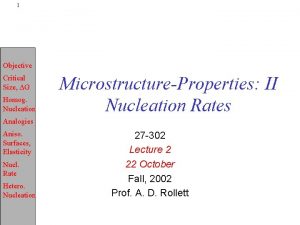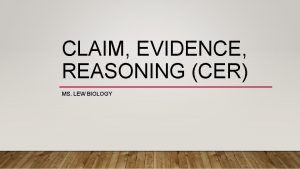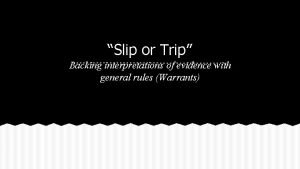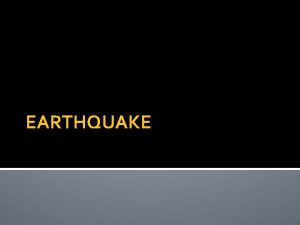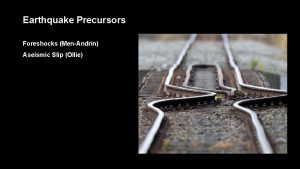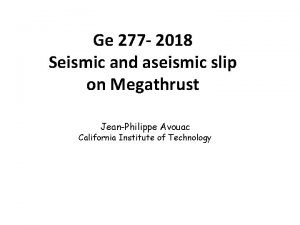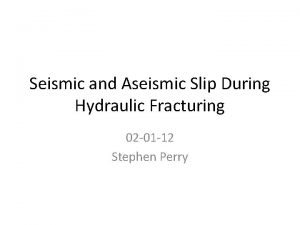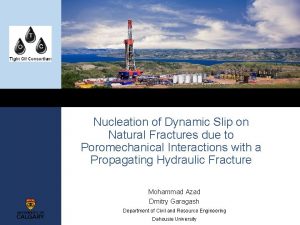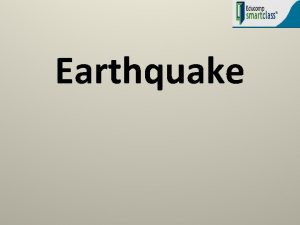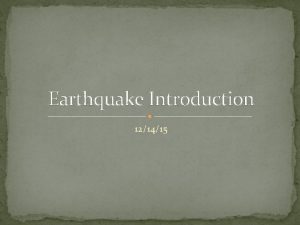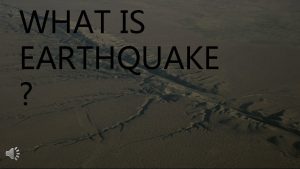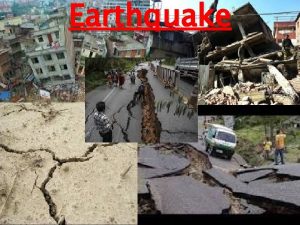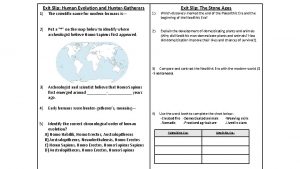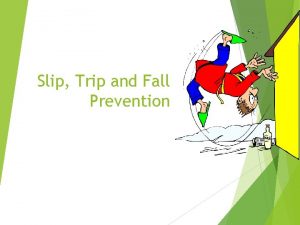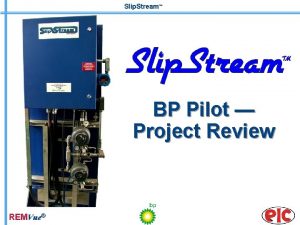Aseismic slip in earthquake nucleation and selfsimilarity evidence













- Slides: 13

Aseismic slip in earthquake nucleation and self-similarity: evidence from Parkfield, California Mortiz Heimpel, Peter Malin (1998) 1

Main findings D S 1. Detecting limit (point D) can be different from point S, which represents earthquake magnitude deviating from self-similar rupture. 2. By examine the effect of background noise on earthquake event detection, the detecting limit at Parkfield is found to be M = 0. 3 (point D). 3. Based on statistical mechanics, they claim point S corresponds to the critical earthquake nucleation size, which is M = 0. 9 (point S) in Parkfield. 2

Detecting limit D: stations dots: events 10 km Parkfield Downhole Digital Seismic Network (DDSN) array. 3

Detecting limit Assumptions: 1. Earthquake are randomly distributed in time. 2. The seismic noise level due to wind and humanity activity is greater during the day than at night. Near the detecting limit, the events during the day have a large probability to be missed than at night. Rydelek and Sacks (1989) 4

Detecting limit – Schuster’s test Day-to-night noise modulation method (Schuster’s test): Step 1: Put events into different sub-catalogues according to their magnitude. Step 2: In each catalogue, each earthquake is represented by a unit vector, with direction given by the time in local 24 hour clock of an event. Step 3: A catalogue of events produces a ‘walk’ in phase space. If PR > 5%, the catalogue is complete (above detecting limit). If PR < 5%, the catalogue is incomplete (below detecting limit). 5

Detecting limit 1. At Parkfield, the detecting limit is found to be M = 0. 3 2. For those incomplete catalogue, the ‘walk’ deviates toward to the night direction, consistent with assumption 2. 6

Physical interpretation of point S Gutenburg-Ritcher Relation : For self-similar rupture, the magnitude-frequency relation satisfies: log N ~ a – b M, b ≈ 1 D S b=1 7

One interpretation - critical nucleation length Lc (1 of 2) For spring-slider model governed by the rate and state friction law: Sliding is stable if: K Sliding is unstable (stick-slip) if: In continuum elastic model, the effective spring stiffness K: length of slip region It implies that for unstable sliding (or seismic event): Lc is the critical nucleation length 8

Critical nucleation length Lc (2 of 2). If slip region L< Lc, Slip is slow and quasi-static, almost without sesimic radiation (no earthquake). If slip region L> Lc, Slip transits to dynamic rupture with significant seismic radiation (earthquake). Theoretically, we expect that earthquake has a minimum size Lc. . There is no event with rupture region smaller than Lc. log N Mv But in reality, m, Lc and s are not homogenous, therefore Lc varies in a wide range, and we cannot observe a sudden cut-off in magnitude-frequency map. M 9

Interpretation of point S in this paper (1 of 2). Asperity failure model (Heimpel 1996): Fault surface is defined as consisting of a large number of asperties. Rupture area grows by sequentially breaking asperities at rupture boundary. Probability of asperity failure: s is the shear stress at this asperity. From facture mechanics, at rupture boundary: K is stress intensity factor. And Heimpel (1996) q is stress drop, assuming constant It relates p(s) with rupture area A, and thus earthquake moment Mo. 10

Interpretation of point S in this paper (2 of 2). After mathematical manipulations (details in Heimpel (1996)), the probability of a rupture with area > A: earthquake nucleation area nucleation magnitude D S b=1 The model is best fit to the data with nucleation magnitude: Mv = 0. 9 Comment: its derivation is not very convincing! e. g. WA(A = Av) = 0. 5 11

Remarks on Mv “Nucleation area” in Parkfield: Earthquake moment Earthquake nucleation length: If using rate and state friction: Assume h = 1, m = 30 GPa, s = 100 MPa and (b - a) = 0. 005, the characteristic slip distance Dc: 12

D ? 13
